

Slightly Better Books
Category Focus:Social History
 |
Home | Contact | About Us |  |
|||||||||||||||||||||||||||||
|
|||||||||||||||||||||||||||||||||
| |
|||||||||||||||||||||||||||||||||
| Social History | ||
| In Pictures: | ****Hyperlinked titles will take you to our copy on sale or prebuilt searches of copies on sale****
Useful Links: Social History Books to look out for: |
On Amazon: |
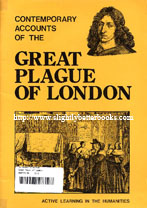 1985, Tressell Publications, pbk Sorry, sold out, but click image or links to the right to access a prebuilt search for this title on Amazon UK Alternative online retailers to try: Or click here to access our prebuilt search for this title on Alibris Or click here to access our prebuilt search for this title on Ebay
|
Contents: |
Other Books on The Great Plague (often called the Plague of London) Bubonic Plague: |
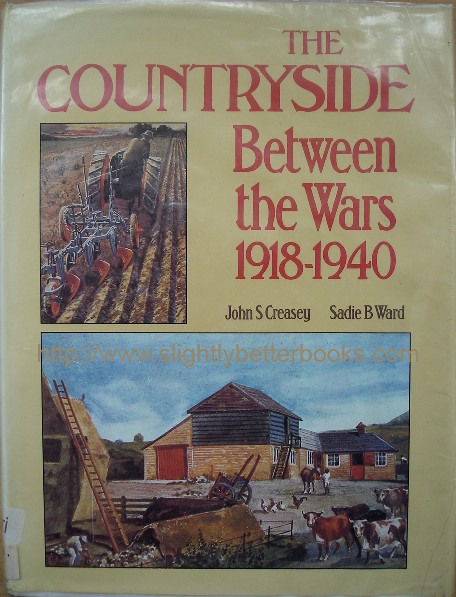 1987, B. T. Batsford, hbk Sorry, sold out, but click image to access prebuilt search for this title on Amazon Alternative online retailers to try: Or click here to access our prebuilt search for this title on Alibris Or click here to access our prebuilt search for this title on Ebay
|
About this book/synopsis: This is said to be the first detailed photographic account of British farming and related activities between WW1 and WW2; and it provides a wealth of information on agricultural methods, implements and machinery, all set within their economic and social framework. The book contains 176 photographs in total. Some of the photographs were published for the first time in this volume and they mainly come from the collections of the Institute of Agricultural History at the University of Reading, but some come from the contemporary farming press. Changes to the countryside and agriculture during the interwar period are covered briefly in the introduction. For anyone interested in agricultural, rural and social history in the countryside, the photographs within this book represent a hugely valuable resource. Some examples of interesting photographs: and many more. Chapters: |
Rural Areas in the Wars |
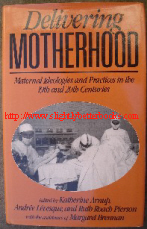 1990, Routledge Sorry, sold out, but click image to access prebuilt search for this title on Amazon Alternative online retailers to try: Or click here to access our prebuilt search for this title on Alibris Or click here to access our prebuilt search for this title on Ebay
|
Contents: In the course of the 19th and 20th Centuries, motherhood in Canada, as elsewhere in the western world became contested terrain. Male medical practitioners vied with midwives, and midwives with nurses, while reform-minded middle-class women joined with the eugenically minded state officials in efforts to control the quantity and quality of the population. As reproduction gained in importance as a political as well as a religious issue, motherhood became the centre of debate over public health and welfare policies and formed the corner-stone of feminist and anti-feminist, as well as nationalist and pacifist ideologies. Delivering Motherhood is the first comprehensive study on the history of this complex development in Canada, where control over the different stages of reproduction, from conception, to delivery, to childcare, has shifted from the central figure of the mother to experts and professionals. The contributions range from the treatment of single mothers in Montreal in the Depression to the La Leche League in the 1960s, 70s, and 80s. Chapters: |
Motherhood and Feminism |
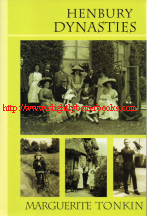 2005, Redcliffe, pbk In stock, click to buy for £12.95, not including post and packing Alternative online retailers to try: Or click here to access our prebuilt search for this title on Alibris Or click here to access our prebuilt search for this title on Ebay
|
About this book/synopsis: Henbury Dynasties is the third and most extensive volume of Henbury histories compiled and written by Marguerite Tonkin from conversations with residents and former residents. In it, she recalls, in words and evocative photographs, the lives of notable Henbury families, and their relations with other local families, neighbours and employees in the village. This is a fascinating source of primary evidence for the social history of a village and the network of relationships, occupations and movements of its residents. Family trees are included to assist the text and have been provided by some of the Henbury families where the trees have been researched and expanded |
|
Sorry, sold out. Alternative online retailers to try: Or click here to access our prebuilt search for this title on Alibris Or click here to access our prebuilt search for this title on Ebay
|
About the book: Liquid Pleasures is an engrossing study of the social history of drinks in Britain from the late 17th Century to the present. From the first cup of tea at breakfast and mid-morning coffee, to an evening beer and a 'night-cap', John Burnett discusses individual drinks and drinking patterns which have varied not least with personal taste, but also with age, gender, region and class. He shows how different ages have viewed the same drink as either demon poison or medicine. John Burnett traces the history of what has been drunk in Britain from the 'hot beverages revolution' of the late 17th Century - connecting drinks and related substances such as sugar to empire - right up to the 'cold drinks' revolution of the late 20th Century, examining the factors which have determined these major changes in our dietary habit. Chapters: Figures & Tables Included in the Book: 1.1 Table of the percentage of water supply zones satisfying official standards, 1991-1995 1.2 Table of the types of drink using tap water, 1995 2.1 Table of the estimates of daily consumption of liquid milk, 1829-1913 2.2 Table of the percentage of samples of milk adulterated, 1877-1911 2.3 Table of estimated weekly consumption of milk by income, 1934 2.4 Table of household consumption of liquid milk, 1950-1995 2.5 Table of percentages of people over 16 drinking liquid milk as a beverage, 1958 3.1 Tea consumption figures for the UK, 1800-1900 3.2 Sugar consumption figures for the UK, 1800-1900 3.3 Table of tea duties levied, 1815-1914 3.4 Table listing the sources of UK tea supplies, 1866-1903 3.5 Table of tea consumption figures for the UK, 1919-1938 3.6 Table of figures on consumption of tea at mealtimes by social class, 1936-1937 3.7 Domestic tea consumption figures, 1950-1996 4.1 Table of official values of coffee and tea imports for England and Wales in 1700-1790 4.2 Table of figures from the analyses of coffee by Dr. A. H. Hassall, 1851-1853 4.3 Table of percentages of coffee-drinking by income groups, 1936-1937 4.4 Table of percentages of adult coffee-drinkers by social class at meals in and out of the home, 1958 5.1 Table of age distribution of soft drinks consumers, 1995 6.1 Figures on the numbers of brewers in England & Wales for 1839, 1880 and 1914 6.2 Table of figures on beer consumption in England and Wales, 1800-1914 6.3 Table of figures on the estimated annual expenditure per head on alcoholic drinks in the UK, 1820-1913 6.4 Average weekly expenditure on alcoholic drinks by trades, 1899 6.5 Figures on beer consumption in the UK, 1919-1938 6.6 Figures on beer consumption in the UK, 1945-1995 7.1 Figures on wines officially imported into England, 1700-1800 7.2 Figures on wines officially imported into the UK, 1800-1910 7.3 Estimates on UK wine consumption for the period 1920-1938 7.4 Table of figures on the number of bottles of wine consumed per year by income groups, 1913-1914 and 1923-1924 7.5 Figures on wine-drinking patterns in 1950 7.6 Figures on consumption of wine in the UK, 1960-1995 8.1 British spirits charged for consumption in England and Wales, 1684-1760 8.2 Consumption of spirits per head per annum in the UK, 1800-1914 8.3 Estimates of spirits & wine consumption by husband and wife units, 1913-1914 and 1923-1924 8.4 Frequency of drinking spirits, 1948 8.5 Consumption of spirits in the UK, 1955-1995 About the Author: At the time of publication, John Burnett was Emeritus Professor of Social History at Brunel University; UK. He has also published: 'Plenty and Want: Social History of Diet in England from 1815 to the Present Day |
1999, Routledge, hbk
1999, Routledge, pbk Other John Burnett listings of potential interest: |
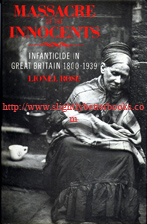 1986, Routledge, pbk Sorry, sold out, but click image above to access prebuilt search for this title on Amazon UK Alternative online retailers to try: Or click here to access our prebuilt search for this title on Alibris Or click here to access our prebuilt search for this title on Ebay
|
Contents: Before contraception was generally available and when abortion was fraught with danger, infanticide was a common solution to the problem of unwanted children. Massacre of the Innocents shows the causes and consequences of the high tide of infanticide in Victorian Britain. Lionel Rose describes the ways in which unwanted and 'surplus' infants were disposed of, and the economic and social pressures on women to rid themselves of their burdens by covert criminal and sub-criminal means. he discusses the activities of infanticidal and abortionist midwives and shows how the practices of wet nursing and baby farming were closely related to infanticide. Unscrupulous insurance salesmen even turned infanticide into a profitable business, in their reckless grab for commissions. Infanticide declined with the growing practice of contraception, the lessening of pressure on unmarried mothers, and as adoption was made easier. This is hard-hitting piece of social history, highly relevant to our own time, for Lionel Rose suggests that the current level of baby battering is a response to the same type of social hardship as produced the 'massacre of the innocents'. Chapters: List of Illustrations: |
�
Other books on Infanticide in Britain
|
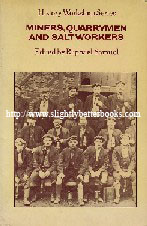 1977, Routledge & Kegan Paul, pbk In stock, click to buy for £13.85, not including p&p, which is Amazon UK's standard charge of £2.80 for UK customers Alternative online retailers to try: Or click here to access our prebuilt search for this title on Alibris Or click here to access our prebuilt search for this title on Ebay
|
About this book: synopsis: Industrial discipline in mining, quarrying, brickmaking and other types of mineral work was very different from that in the 19th Century factories and mills. Mineral workers had no purpose-built premises to house them in - they only had endless galleries, scattered excavations or open-fronted sheds. In terms of tools, they also did not have expensive machinery to operate - rather they were working with shovels and hand-picks. Supervision of the workers, their efforts and output was difficult because of the open air or underground nature of the work. Some mineral workers like the Derbyshire lead miners or Cornish tin miners had no supervision whatsoever. The threat, or sanction of unemployment was absent in some mining locations where there was no reserve pool of labour to take the place of a sacked or redundant man or men. This applies to locations like the Isle of Purbeck, or the Forest of Dean. Whilst there was no reserve pool of labour, there was also an abundance of auxiliary jobs for the population local to the mines which allowed the miner's family to support itself in many different ways. Mining and quarrying were also very safe from the threat of the machine being sweat and muscle jobs and so a good proportion of the work was in the hands of self-governing workers companionships. Coal miners are the only class of mineral worker to have lodged themselves in the consciousness of historians. This is partly due to their sheer numbers and somewhat due to trade union strength, but also partly due to uneven survival into the twentieth-century. Other types of mining have disappeared from the written record either because they were too localised to achieve a national recognisable identity (like the arsenic miners of Devon) or because like the sett-makers, sand-getters and gravel-drawers, they were too dispersed. This book deals with mineral workers of every class, discusses the peculiarities and common features of their work and at the same time showcases three detailed local studies: Pit Life in County Durham, Slate Quarrying in North Wales; and Salt Workers in Cheshire Chapters: Part 1. Mineral Workers by Raphael Samuel Plates: Figure: |
|
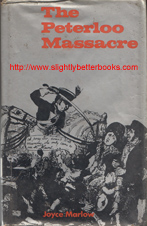 1969, Rapp & Whiting, hbk In stock, fair condition, click image above to purchase through Amazon UK. Price: £9.99, not including post and packing, which is Amazon UK's standard charge of £2.80 Alternative online retailers to try: Click here for our prebuilt search for any edition of this title on Alibris Click here Click here to access our prebuilt search for this title on Biblio
|
About this book/synopsis: On a hot August day in 1819, over 60,000 men, women and children assembled on St. Peter's Field, near the centre of Manchester, to hear 'Orator' Hunt speak on the urgent need for parliamentary reform. Almost immediately on Hunt's arrival, troops were ordered to disperse the crowd. Within twenty minutes, the field was deserted and 60,000 people, among them the dying and wounded, were fleeing through the narrow streets of Manchester, adding the word Peterloo to the English language. This is the first book for the general reader to set this most memorable of Manchester days, which affected the whole English political climate, in the context of its background - the traumatic upheaval of the Industrial Revolution, the emergence of the new urban 'working class' and the particular plight and struggles of the most organised and articulate of these newcomers, the Lancashire cotton workers. The author, herself a Mancunian with a localised knowledge of the area and its ethos, has drawn the protagonists in human terms - on the Radical side, the vain, arrogant, but sincere Henry Hunt; the ebullient, romantic, touchy Samuel Bamford; the self-taught, self-opinionated father of popular English journalism, William Cobbett; on the Government side, the colourless, but tough Prime Minister, Lord Liverpool; the personally kindly, politically inadequate Lord Sidmouth; the handsome, hated Lord Castlereagh; and the timid panic-stricken local magistrates who wielded such immense power. Most of the story is told in the words of the contemporary documents and representing the anonymous thousands is John Lees, a cotton spinner who survived the Battle of Waterloo only to die a long and painful death as a result of his injuries at Peterloo Contents: |
Further Reading: |
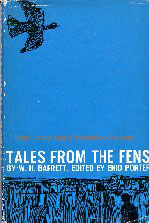 1966, Routledge & Kegan Paul, hbk Sorry, sold out. Click on image/title to access other copies on sale at Amazon Alternative online retailers to try: Or click here to access our prebuilt search for this title on Alibris Or click to access our prebuilt search for this title on Ebay
|
About this book/synopsis: Reprinted in 1966 in hardback with dustjacket by Routledge & Kegan Paul, this 203 page volume (illustrated with 11 illustrations) tells some of the stories heard by a Fenlander in his youth in the area around Littleport, Brandon Creek and Southery on the Cambridgeshire-Norfolk borders; and recorded by him to ensure that the ancient Fenland art of storytelling should remain alive and not forgotten. In amongst these tales are place legends whose origins reach far back into history; character sketches of 19th Century Fenland villagers; stories of floods and their effects on Fenland agricultural and social life and stark accounts of poverty and economic unrest in the Fens of the last century. There is gaiety and humour, however, in many of the tales while in some of them can be seen the influence of the dons and undergraduates of Cambridge who spent vacations in the Fins, mingling with the Fenmen and ex-changing stories with them in the riverside inns. Mr. Barrett writes in a letter: "I started life with a caul [a portion of the Amnion, especially when it covers the head at birth]. This is preserved in the Folk Museum, Cambridge, as this was supposed to endow one with the gift of the gab. I came along too late to prove it, for story telling as an art died out when the old men of my youth died too. I have written the stories they used to tell, starting work in the Fens at eleven years of age - 'crow-scaring' for threepence a day, and perks which consisted of frozen hands and chillblained feet, suffering at times from bouts of 'foot and mouth disease', (an empty gut and badly shod). I finished my working days as a gardener to the Archdeacon of Norwich." Contents: Part Two: Fenland History Part Three: Legends of the Fens Part Four: For Amusement Only Illustrations |
�
Other Books on the Fens: |
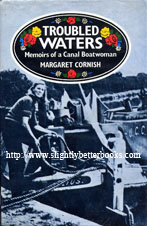 In stock, click to buy for £10.55, not including p&p, which is Amazon UK's standard charge of £2.80 for UK buyers Alternative online retailers to try: Click here for our prebuilt search for any edition of this title on Alibris Click here for our prebuilt search for any edition of this title on Ebay |
Synopsis: This book contains an engaging personal account of life on the inland waterways of England in wartime. During the Second World War, when shortage of manpower forced the Ministry of Transport to recruit women for work with the Grand Union Canal Carrying Company, Margaret Cornish was one of the small band of uncertain novices who stepped aboard the narrow boats. It proved a challenging experience as the 'trainees' struggled with heavy boats loaded with 40-45 tons of cargo from Limehouse docks to Birmingham and then with coal from the Coventry coalfields southwards to supply the canalside factories. Working through ice-ups, rain and summer droughts, real comradeship sprang up between the young women as they acquired the competence and traditions of the boat people for themselves. This is the true story behind Margaret Cornish's highly popular fictionalized tales in Still Waters. The life was tough, but it had a lasting appeal and since those days, Margaret has never completely left the canals. This is her story. Chapters: 1. Nostalgia Author's Postscript; Glossary; Further Reading; Index |
1987, John Hale, hbk, 1st Ed.
|
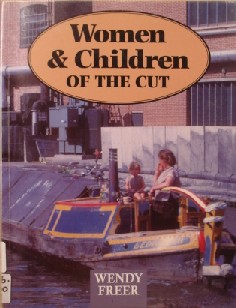 1995, Railway & Canal Historical Society Sorry, out of stock, but click image to access prebuilt search for this title on Amazon Alternative online retailers to try: Or click here to access our prebuilt search for this title on Alibris Or click here to access our prebuilt search for this title on Ebay |
About the author: Wendy Freer is a social historian with a particular interest in canals and in the employment of women and children Contents: The book contains 42 illustrations; and sets out to describe the everyday life of the families who lived wholly or mainly on long-distance narrow boats. There is no attempt to romanticise the boat people and their way of life. Instead, every effort has been made to set their experiences and circumstances firmly in context and to make accurate comparisons with other occupational and social groups. Canal-boat work is one of the few occupations employing a significant number of women and children where no specific legislation was ever enacted to control the hours and conditions of their work. Child labour was common far into the 20th Century and children were denied even the most elementary education. One of the main purposes of the book is, therefore, to look at why this was so; what attempts were made to remedy the situation, and why they failed. There are other books about canal life, but few have concentrated on the lives of women and children. One notable exception is Sheila Stewart's splendid book Ramlin Rose Chapters: Acknowledgements; Preface The Canal Carrying Trade References; Index |
� |
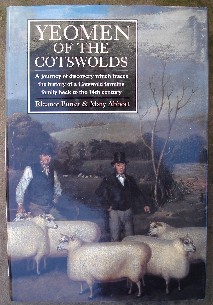 1995, Images Ltd In stock, click to buy for £22.00, not including post and packing, which is Amazon UK's standard charge (£2.80 for UK buyers) Alternative online retailers to try: Or click here to access our prebuilt search for this title on Alibris Or click here to access our prebuilt search for this title on Ebay
|
Contents: This book tells the story of a remarkable journey into the past. Intrigued by the richness of her husband's family records, Eleanor Porter began a major search. She eventually traced the family down six centuries of England's history, discovering that almost all its members were farmers with strong church loyalties, and deeply rooted in the land. Eleanor's research was followed closely by historian and writer Mary Abbott, and eventually they began working together. The result is an engaging study that begins with the occasion of the 100th birthday of Eleanor Porter's father-in-law and takes us back to medieval times. Against the background of national and international events, the authors paint a more immediate picture of the history that actually shaped lives:the births, marriages and deaths, the rhythm of the farming year and the continuing concerns of crop and livestock husbandry. Chapters: |
�
Cotswold history: |
|
[top] | |
| [top] | ||